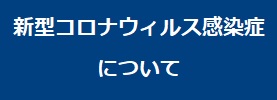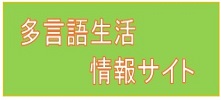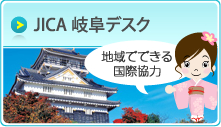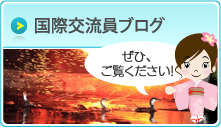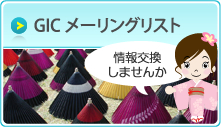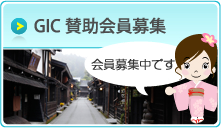 |
(2024.04.17) |
日本語と英語版があります。 This post is available in both Japanese and English, please scroll down for the English version.
-
英語にある日本語から外来語・借用語
-
~欧米で日本のイメージ~
-
以前に和製英語についての記事を掲載しましたが、よく考えてみると、英語にも日本語からの外来語が増えてきています。理由として、日本文化は海外でも人気だからです。この記事を書こうと思ったきっかけは、今年イギリスのオックスフォード英語辞典に新たに23個の日本語の語彙が追加されたというニュースを読んだからです。この23個の語彙は英語で使われている最初の日本語の語彙ではないですが、ニュースの記事をきっかけに「今までどんな日本語の語彙が英語で使われているのか」と考え始めました。そこで、これから英語で使われている日本語の語彙を紹介し、英語の使い方・意味が同じかどうかも説明します。その語彙を見ると、イギリスといった欧米の国々が日本に対してどんなイメージをもっているのかがわかるようになります。
まず、日本が発祥であるカラオケについて紹介します。英語でも「karaoke」と言いますが、発音は日本語と比べて、少し異なります。「キャリーオーキー」みたいです。欧米でもカラオケがありますが、日本のカラオケスタイルと違います。日本なら、友達と一緒に自分の部屋に入って、一緒に歌いますね。でも、イギリスといった欧米の国では、バーでステージに登って、歌います。全然知らない人の前で歌うので、シャイな人向けではないと思います!多くのイギリス人は、他の人の前で歌いたくないので、全然カラオケをしません。日本のカラオケは簡単に友達と一緒に楽しめますので、よりいいです。イギリスの都市で日本スタイルのカラオケ館も見つけることができると思いますが、高くて、珍しいです。日本の文化は海外でも人気になりつつありますので、これから日本スタイルのカラオケ館も人気になって、増えるといいなと思っています。
カラオケだけではなく、他の日本の趣味が欧米でも人気となっていて、その結果、英語でその日本語の言葉が使われるようになりました。特に、日本の武道はイギリスでも熱心にされている趣味です。空手は一番人気ですが、柔術と柔道も人気のある趣味です。これらも、日本語の発音と英語の発音が異なります。空手は「カラティー」、柔術は「ジュジツ」と柔道は「ジュド」らしいです。柔道は一番近いですが、音節が短くなります。日本の武道だけではなく、韓国のテコンドー等も人気です。
その上、イギリスの新聞にはすべて数独・ナンバープレイスが載っています。この記事を書くために数独について調べる前まで、私は「sudoku」という語彙は日本語からの語彙であることを知りませんでしたが、明らかなようです!英語で、は「sudoku」と言いますが、「ナンバープレイス」というは語彙は全く使っていません。そのため、「ナンバープレイス」という言葉は、実は和製英語です。
自然災害に関して、「地震」なら英語の語彙である「earthquake」を使いますが、「台風」又は「津波」は日本語の語彙が使われています。英語で、台風は「typhoon」になります。「ph」の発音は「f」のようになります。それで、発音は「タイフウン」です。なぜ最後の「n・ン」がある理由がわかりません!直接翻訳すると、「台風」は「tidal wave」になります。「tidal」は名詞の「tide」を形容詞としたもので、日本語で「潮流」という意味です。「wave」は「波」という意味です。日本人にとって当たり前かもしれませんが、潮流は津波の原因と全然繋がっていませんね。津波は地震が原因で起こります。「tidal wave」を使えば、原因である「地震」という意味が無くなってしまいます。そのため、直訳ではなく、日本語の語彙である「津波」を使う方がいいと思います。英語のニュースではずっと「津波」が使われています。英語の発祥地であるイギリスは、自然災害があまりありません。地震、津波、台風でさえありません。一般的に冬の時期に「暴風」が発生しますが、基本的に、日本の台風より弱いです。イギリスの「暴風」も名前がつけられます。毎年、冬の始まりから終わりまで、アルファベットのAからZまで順に名付けます。もちろん、Zまで名前がつけられたということは聞いたことがありません。私の人生で一度もありません。例年EかFまでだと感じます。日本とイギリスには四季があります。日本なら、台風の季節は8月~9月ですが、イギリスの暴風は一般的には10月~2月の冬の間です。1英語では「hurricane」と「cyclone」の単語もあります。「hurricane」、「cyclone」、「typhoon」の3種類の強い暴風はだいたい同じですが、どこで発生するか次第で、語彙の使い方が異なります。南太平洋またはインド洋の地域の場合、英語で「cyclone」を使います。東太平洋と大西洋(北米と南米)の場合なら、「hurricane」が使われます、西太平洋(日本)の地域の場合は、「typhoon」と言います。そのため、英語のニュースで日本の地域で発生した暴風と報じる場合は、日本語の外来語を使っています。
次に「布団」について説明したいと思います。英語でも「futon」という単語があります。ただ、発音については、「ふ・fu」は日本語と比較してもっと有気音です。しかし、日本の「布団」は欧米に来た時、カラオケと同じように変わりました。イギリスにある布団と日本の伝統的な布団は違います。英語で「futon」はマットレスの種類を指します。日本の布団は敷き布団、掛け布団と枕で完成します。畳の上に布団を敷く習慣があります。欧米で、そのような習慣はありません。畳の部屋がなく、床の上にマットレスを置くということが伝統的ではありません。そのため、欧米における「futon」は欧米の習慣と関係しています。日本の布団と比べると、より厚いと感じます。日常生活に使っているマットレスのようなものではなく、一般的に予備のベッドになります。例えば、友達が家に泊まる時、布団は床の上に置いて使います。ソファベッドも「futon」のひとつと言えます。イギリスにも無印良品などの日本のチェーン店やブランド店があるので、家具を含む日本の商品が人気になりました
欧米における着物のスタイルは日本の本格的な着物と異なります。英語で「kimono」というと、多くの欧米人は日本の本格的な着物を想像します。特に、海外の観光客が増加しているので、京都等で着物のレンタルをする観光客がいます。SNS、観光広告等で着物を着ている人をよく見るため、欧米人は着物をよく知っています。しかし、着物と浴衣の違いがわからない欧米人が一般的だと思います。「浴衣」という言葉を聞いたことがないので、浴衣を見ると、「それは着物」と思っているイギリス人が多いはずです。欧米のブランドではラウンジウェアのサテンで作ったガウンの名前として「kimono」が使われています。毛糸ではない長いカーディガンの場合も、「kimono」が使われています。例えば、1990年代の有名な歌手であるマドンナはミュージックビデオで欧米スタイルの着物を着ました。でも、それは最近珍しいことであると私は感じています。多くの人は、着物が日本の衣装であることを知っているので、日本の文化に関係ないことについて使われていると、その意味が正確ではないことがわかる人は前より多いです。数年前、日系でないアメリカ人のセレブが、自分のラウンジウェアのブランドを発売した際、「kimono」を名付けたところ、オンラインで多くの人が怒ったため、ブランドの名前を変更しました。
2月に英訳された日本の小説の記事について述べましたが、海外でも漫画が人気であるため、イギリスの本屋には、本棚に英訳された漫画が並ぶことが一般的になりました。そのため、英語では「manga」という外来語を使っています。「漫画」だけではなく、今年のオックスフォード英語辞典に追加された23つの言葉の中に、「漫画家・mangaka」があります。また、英語で「アニメ・anime」も使います。面白いことに、「アニメ」は「アニメーション」の略語であり、「アニメーション」は英語から(animation)の外来語です。しかし、英語は日本語より略語は少ないので、元々英語では「anime」と言いませんでした。そのため、「anime」の語彙は日本語から来ました。外来語の循環らしいですよね。英語で「anime」と言うと、使い方は日本からのアニメ番組か映画のためだけです。一方、欧米の国ではアニメーションについて話す時、「cartoon」を使います。
他の欧米の国で、人気がある日本のものは、日本料理です。日本についてあまりわからないイギリス人でも日本料理を食べたことがあるだろうと思います。そのため、日本の食べ物について、日本語の語彙がよく使われています。日本語から英語となった外来語は、主に食べ物の語彙です。日本語では「ラーメン・ramen」と言います。確かに、日本語のラーメンは中国語の外来語ですね。しかし、英語圏では日本語のような発音を使っています。東アジアでは特に興味がない方と聞いて、「ラーメンは元々日本料理だ」と思われている人が多いと思います!理由として、欧米では、中国より日本の文化面などによる影響力が大きいと感じるからです。例えば、「クールジャパン」のポップカルチャー運動が見られました。英語で「sushi」という語彙もあります。日本語で「お寿司」とも言いますが、英語なら「お」を常に省いています。イギリスのお寿司屋のメニューで、「握り・nigiri」、「刺身・sashimi」等の語彙も見られます。欧米では、日本では見たことがない寿司もあります。例えば、欧米ではアボカドは入っている巻きずしが人気です。
全ての料理に関する語彙を説明することはできませんが、他に思い浮かべるのは「パン粉・panko」、「カツ・katsu」、「おにぎり・onigiri」、「豚骨・tonkotsu」です。イギリスでは東アジア系の人々が多く住む地域がありますので、都市には東アジアの商品を取り扱うスーパーがあります。東アジアから、特に中国人の留学生が多いため、一般的に、大学に近いスーパーは東アジアの商品を取り扱っています。しかし、最近では一般的なスーパーでも日本料理に必要な食品などを見つけられます。イギリスでカツカレーが人気なので、作れるようにパン粉は一般的なスーパーにもあります。カツについて、私がわからなかったのは、「カツ」の単語は英語の「cutlet」が由来です。カツレツの略語ですが、英語の発音と全然違いますため、英語が母語であるのに、英語の外来語として気づきませんでした。英語の発音は「クットレット」です。また、スーパーだけではなく、イギリスには東アジア料理のレストランも多いです。チェーン店もあります。イギリスでは4つ有名な日本食チェーン店があります。名前は日本人にとって面白いかもしれませんが、「わがまま」、「よ!すし」、「わさび」と「いつ」です。イギリスのコンビニでは、おにぎりを買えませんが、「わさび」という日本食チェーン店の1つはテイクアウト中心で、おにぎりをテイクアウトすることが可能です。
飲み物では、英語では、日本語のお酒から「sake」という語彙があります。しかし、日本語の語彙と英語の語彙との意味は異なります。日本語の「お酒」の英翻訳は「alcohol」です。「アルコール」を含んでいるすべての飲み物を示しますよね。例えば、ビール、ワイン等は「お酒・alcohol」です。日本の伝統的なお酒は日本酒という米から作ったお酒ですね。しかし、英語で「日本酒」は「sake」になります。そのため、「sake」は外来語ですが、英語における意味が変更しました。
イギリスの学校では日本史を学ぶことがないため、日本史に興味がある人、大学で日本学部に入る人以外は、イギリス人が知っている日本史の知識は限定的だと思います。欧米で一番有名な日本史の言葉は、忍者、侍、将軍です。そのため、英語ではその言葉を表す外来語があります。英語ではローマ字と同じように「ninja」、「samurai」、「shogun」です。その3つの語彙は軍隊に関係していますね。侍の刀は英語で「katana」となり、多くのイギリス人は聞いたことがあると感じます。理由としては、日本の侍に関するテレビ番組、映画等は多いため、多くのイギリス人がその語彙聞いたことがあるからと考えられます。英語で「芸者・geisha」という語彙もあります。しかし、日本史の語彙と芸者といった伝統的な語彙について、多くの欧米人がきちんと理解していない場合もあると思います。
伝統と言えば、日本が発祥である文芸の場合、英語でも日本語の語彙が使われています。例えば、詩に関して、俳句は英語で「haiku」です。欧米でも有名な、英語の俳句が書かれています。また、欧米では日本庭園が人気です。私の出身バーミンガム市の植物園では日本庭園を見ることができます。その日本庭園の中に、盆栽があります。英語で「bonsai」と言います。庭園だけではなく、イギリスの花屋で盆栽を見たことがあります。イギリス人の皆さんは「折り紙・origami」を聞いたことあると思いますが、折り紙をおることができる人は日本人より少ないかもしれません。イギリスでは本格的な折り紙専用の紙は珍しいと感じます。物作りか芸術の趣味を持っている方の中で、だんだん人気になっているようです。文具店で折り紙の本等が買えます。日本に来る前に、「origami」と聞くと思い浮かべたことは、ナプキンから作られた白鳥です。日本で白鳥はあまり見たことがありませんが、イギリスでは日常生活でよく見られます。日本人にとっておかしいと思われるかもしれませんが、フォーマルなイベントの際、テーブルの上にナプキンで作られた白鳥が置いてあるのが一般的です。日本の折鶴には主に「平和」という意味がありますが、その白鳥にはあまり意味がありません。
要するに、日本からのことについて英語で話す場合、日本語からの外来語を使うのが一般的です。イギリスをはじめ欧米でも日本の文化が人気になりつつあり、使っている語彙も増加しています。当たり前かもしれませんが、日本の会社とブランドの名前なら、欧米ではローマ字の語彙を使っています。特に、日本の自動車会社や技術会社は欧米に製品を輸出しています。トヨタ、日産、ヤマハはイギリス人の皆さんが聞いたことがあると思います。イギリスの道では、毎日日本の車を見ることができます。
-
-
Japanese loanwords used in English
A couple of months back, I wrote a blog post about "wasei-eigo", quasi-loanwords from English used in Japanese that have different meanings compared to the original English. Aside from these "wasei-eigo" words, there are many English loanwords used in Japanese which have the same meaning in English and Japanese and being a native English speaker who learnt Japanese as a third language, these words can be very useful and stood out to me immediately when I began learning Japanese over 6 years ago. Something I had never really taken the time to consider however, was the opposite; words originally from Japanese that have migrated into the English language. Recently, I saw in the news that 23 new words from Japanese have been added into the Oxford English Dictionary, and while these 23 words are not the first Japanese words to be used in English, it did act as a catalyst to get me thinking about what other Japanese words we've been using in the UK. So, I will now introduce some of these words, and whether their usage or meaning differs from the original Japanese.
Karaoke is originally from Japan, and so we use the Japanese word in English. Although, karaoke in Japan and in western countries is quite different, as Japanese karaoke is done in smaller rooms rather than in an entire venue. In Japan you go to karaoke with a group of friends or even solo, and rent a room for a specific amount of time. You all go into the room and choose songs to sing, and you can also order drinks and food to your room. On the other hand, karaoke in Britain would be done in a bar or other type of venue, and you'd put your name down to sing a specific song, then you go up onto the stage and sing in front of a room of people, most of whom are probably strangers. In short, western karaoke isn't for shy people! I much prefer Japanese karaoke as it is a great way to have fun with your friends and sing some of your favourite songs. I have seen Japanese-style karaoke rooms in big cities in the UK, but they are rare and pretty expensive, so hopefully in the future they'll become more widespread. The pronunciation of the word "karaoke" in Japanese is different from how we pronounce it in English. While in English we say "carry-oh-key", in Japanese it's more like "ka-ra-oh-kay" with 4 distinct syllables. If you translate it directly, in Japanese karaoke means "empty orchestra".
Different Japanese martial arts have also become widespread in Britain, and are a popular hobby, so these have also become Japanese loanwords we use in English. Namely, karate, jujitsu and judo are popular. Again, the original Japanese pronunciation differs from how we pronounce it, as in English karate becomes "kara-tee" while in Japanese it's "ka-ra-teh". Jujitsu would be directly romanised as "Jujutsu" with the first syllable having an extended "u" sound. Judo is the most similar to the original Japanese word, although both vowels are extended in Japanese so longer than the way we say it in English. Karate has the same "kara" as karaoke, and directly translated means "empty hand", since it is a form of defence where no weapon is needed, so in that sense someone doing karate is literally empty-handed. Not only Japanese martial arts are popular in Britain, as martial arts from all over the world have become popular hobbies, for example Korean taekwondo.
In every British newspaper you will probably find sudoku in the same section as the crossword and other puzzles. I'd never realised sudoku was a Japanese word, but now that I do know it seems obvious! Interestingly, in Japanese there's a "wasei-eigo" word, "number place" which also means sudoku, that does not exist in English.
When discussing extreme weather events and natural disasters, there are two common words in English that come from Japanese. Japan has a lot of natural disasters and is probably most known for the many earthquakes that occur here. In Japanese, earthquake is "jishin", which directly translates to earthquake. While we don't use the word "jishin" in English, we do use typhoon and tsunami, both of which come from Japanese. Tsunami is the same in Japanese, while the Japanese word for typhoon would be spelt as "typhoo" if it were the same as the Japanese pronunciation, or would be romanised as "taifu". Typhoons are a type of tropical storm, the sort that we don't experience in Britain and even though we do have storms which normally occur during winter, they're not as severe as tropical storms. The Japanese typhoon season is around August/ September, at the end of summer while the majority of British storms occur from October to February. In Japan typhoons are given numbers counting up from the first typhoon of the year, while in Britain, like in many other countries, we name our storms. The name of the first storm of the winter season will start with A, and then the names will be given based on the alphabet, often reaching E or F (although they've reached K this year!). There are two other words in English that are used to describe tropical storms, those being cyclone and hurricane. Regarding the difference between the three words, cyclone is used for storms in the south Pacific or the Indian Ocean, hurricane is used for storms in the eastern Pacific and Atlantic Ocean (storms in the Americas) and typhoon is used for storms in the western Pacific, the region Japan is in. So, if there is a tropical storm in Japan or around this region, in English we refer to it as a typhoon, and it will be reported in the news as a typhoon. The other natural disaster-related Japanese loanword we use in English, tsunami, the English-origin phrase sometimes used is tidal wave. However, arguably this is not the most accurate way to describe a tsunami, given that they have nothing to do with tides and are caused by earthquakes. The literal translation of "tsunami" would be "port/ harbour wave".
We use the word futon in English usually to describe a spare bed, often a fold-up mattress that we put on the floor if a guest is coming to stay. It can also be used to describe a sofa bed. Actual Japanese futons differ from the ones we have in the west, and their usage differs too. The futon is a traditional Japanese bed made to go directly on top of traditional tatami mat flooring, so you are essentially sleeping on the floor. They're made to be put away during the day and taken out just for the nighttime. It's made up of the base mattress, a blanket and a pillow, whereas in English the word "futon" would just be used to describe the mattress itself rather than every component. Of course, Japanese people may opt for beds and mattresses and not all Japanese apartments have tatami flooring these days. If you visit Japan and stay in a traditional ryokan inn, you may sleep on a futon bed in a tatami room. It does seem as though Japanese-style minimalist home décor has become more popular in Britain, for example the kind the Japanese brand Muji sells.
As with futons, actual Japanese kimono and what we may describe as a "kimono" in English differs. In Japanese, "kimono" literally means "thing you wear", and in the past such traditional clothing was worn in everyday Japanese life, although nowadays they are most commonly worn for ceremonies such as graduation or coming of age day. They are complicated garments with different levels of formality and different components, the most notable of which is the obi sash which is like a belt, and there are special socks (tabi) and sandals (zori) worn with a kimono. Many people from outside Japan have probably seen pictures on social media or even in tourism promotions of people wearing pretty patterned kimono, and it is common for tourists to rent kimono in Kyoto's traditional Gion district. While people have probably heard of kimono, fewer people in the west have heard of another main item of traditional Japanese clothing, the "yukata". Yukata are like casual summer kimono so are made of thinner material and easier to move around in than kimono, which have more layers. You can often see people wearing them to the many summer festivals held across Japan. In the west, we use the word "kimono" for garments that are quite different to the traditional Japanese clothing, for example, it can be used to describe satin loungewear robes, or for long non-woollen cardigans. Madonna's famous kimono from her 1990s music video comes to mind as an example of a westernised kimono. If anything, yukata are more similar to some of the things that are called kimono in the west, as the word "yukata" literally translates to "bathing clothes" as they were originally worn as bathrobes for example at traditional bathhouses. Personally, I feel like the wider usage of the word "kimono" to describe vaguely kimono-like westernised robes has decreased recently, given that general consciousness of what an actual kimono is has increased.
Japanese manga and anime have become increasingly popular in the west, including in Britain, and many bookshops have a shelf dedicated to manga. Manga are essentially Japanese comic books, but since they have a distinctive style and are quite different to western comic books, we use the word manga to describe them. Anime are Japanese cartoons, and can be tv shows or films, often based on manga, and the Japanese word "anime" is from the English "animation", which became an English loanword used in Japanese. Now the shortening "anime", has come full circle and has become a Japanese loanword used in English! One of the new 23 words to be added to the Oxford English Dictionary is "mangaka", a writer and/or illustrator of manga.
Even British people who do not know much about Japan have almost definitely tried Japanese food, probably the most popular Japanese cultural export. We have therefore adopted food terms into the English language. The Japanese word "ramen" is actually a loanword from Chinese, as the dish has its origins in Chinese cuisine. The way we pronounce it in English comes from the Japanese word though, and most British people may not be aware of its Chinese origins and would probably assume ramen is of completely Japanese origin. I have a strong impression that this could be because Japan has more soft power in the west, with the pop culture movement "Cool Japan" gaining traction. As well as ramen, sushi is another very popular Japanese food, although it is often called "o-sushi" in Japanese, with the "o" being an honorific. Types of sushi, such as nigiri (raw fish on rice) and sashimi (raw fish with no rice) are also Japanese loanwords that we use in English, and if you went to a sushi restaurant you would probably see these words on the menu. As with many cuisines, when food from one country becomes popular overseas it may end up different to how it is in its country of origin, and sushi is no exception; a popular ingredient in sushi in the west is avocado, however I have never seen avocado sushi in Japan, and Japanese people often seem bemused by the idea of avocado sushi!
I won't be going over every Japanese cuisine-related word that has made its way into the English language, but some others that come to mind are "panko", "katsu", "onigiri" and "tonkotsu". Since Britain has a multicultural society, there are many people whose family is of east Asian origin, and people who themselves have moved to Britain from East Asia. As a result, it is very common to find east Asian supermarkets in British cities. However, these days, you can also find east Asian food and ingredients in general supermarkets too. Since katsu curry is so popular, I've seen panko breadcrumbs in the supermarket (these are used to make katsu). In Japanese "panko" literally means "bread powder" since "pan" is bread (loanword from the original French) and "ko" is flour/ powder/ dust. On the subject of katsu, it's a shortening of "katsuretsu" which is an English loanword that's come from "cutlet". Since "katsuretsu" is pretty different from the original English pronunciation, I hadn't noticed that it came from cutlet! As well as east Asian supermarkets, there are also many restaurants specialising in east Asian food in Britain, and this includes Japanese food. There are even 4 big Japanese chain restaurants in Britain, those being "Wagamama", "YO! Sushi", "Wasabi" and "Itsu". Regarding the meaning of the names, in Japanese "wagamama" means selfish, "wasabi" is a horseradish sauce often eaten with sushi, and "itsu" means when. In Japan, onigiri are found in every convenience store on every street, while in Britain they are rarer. "Wasabi", specialising in takeaway food, sells these rice balls covered in nori (seaweed).
Concerning drinks, Japanese rice wine, called sake in English is pretty well known. However, while "sake" is a Japanese word, in Japanese its meaning is different. In Japanese, "sake" or "o-sake" means alcohol, and so describes any alcoholic beverage such as beer or spirits. What we call sake in English, Japanese rice wine, is called "nihon-shu" in Japanese. "Nihon" means Japan, and "shu" uses the same kanji character as "sake", but read differently due to the context, so the literal translation would be "Japanese alcohol". So, if you visit Japan, don't just say "sake" to a bartender, as they won't know what drink you'd like!
We don't study Japanese history in the British school curriculum, so unless they are interested in Japanese history or do Japanese studies at university, the average British person may not know much about Japanese history. Despite this, some Japanese historical terms are more widely known in the UK, often because of TV programmes or films. The most known historical words are probably "samurai", "ninja" and "shogun". During Japan's feudal period, samurai were the highest ranking social class in Japan and were known for their military prowess and honour, serving the lord in their region as part of the military. Ninja were also around in Japan's feudal era, but were mercenaries who operated in secret. A shogun was a military ruler, the person at the head of the samurai class, and during periods of Japanese history where there was a military government, (most notably but not only the Edo period, 1603-1868) they ran the country. So, all three of these terms relate to the feudal and militaristic period in Japanese history (pre-modern period), as this is the most present in western pop culture. The word "katana" is also quite widely known in the west, and refers to a Japanese sword. "Geisha" is also a word that many British people will know, and geisha are traditional performing artists who are trained in various art styles, such as dancing, singing or playing traditional musical instruments. They may also carry out traditional tea ceremonies in tea houses and are skilled conversationalists, and the "gei" in geisha means art. They wear traditional kimono and have a characteristic make up style, with their faces painted with white powder. Depending on the region of Japan, the word used to describe geisha differs, and there are separate words for trainees, although "geisha" is the only word widely known in the west.
On the subject of traditional Japanese arts, many people in the west have become aware of Japanese poetry, particularly "haiku" poems. Haiku are short poems with three parts which consist of a 5, 7, 5 syllabary pattern, and while this is of course, not the only type of Japanese poem I would say it's the only one that's become widely known and emulated in the west, with people writing them in English. Japanese gardens are also popular (for example, in Britain Birmingham's botanical garden has a Japanese garden), and they use specific Japanese aesthetic ideals, making them beautifully unique. A garden-related Japanese word which is used in English is "bonsai", when referring to a "bonsai tree". These are miniature trees grown in pots, but the trees are not miniature by genetics, rather the gardener cultivates it in a way to keep it that size as a representation of nature but on a small scale. They are living art, and are difficult to grow and care for. For the last art-related term, "origami" is another well-known and often used loanword. Origami is the art of folding paper into decorative 3D shapes, and there is special origami paper sold here in Japan which is square-shaped and can have decorative patterns on it. From my observations while living in Japan it seems that most Japanese people can do origami, whereas I'm not sure the same can be said of most British people, although it has become popular in Britain recently as a wellness-related craft, and origami instruction books are available. While napkins folded into swans can be seen in Britain, in Japan paper cranes are the most commonly seen type of origami. In Japanese these are called "orizuru" as "ori" is folding while "zuru" is crane (the "gami" in "origami" means paper), and these origami cranes have become symbolic of hope and peace.
To conclude, when we discuss Japanese culture in English, using Japanese loanwords to do so is normal, which explains why as Japanese culture gets more popular in the west and spreads, more Japanese-origin words are added to English dictionaries. As well as the sort of terms mentioned throughout this most, we of course use Japanese brand names in English too. Notably, Japanese car manufacturers and technology companies are big in the west, and Toyota, Nissan and Yamaha come to mind as companies British people will definitely have heard of, and there's a Japanese car on every British road.
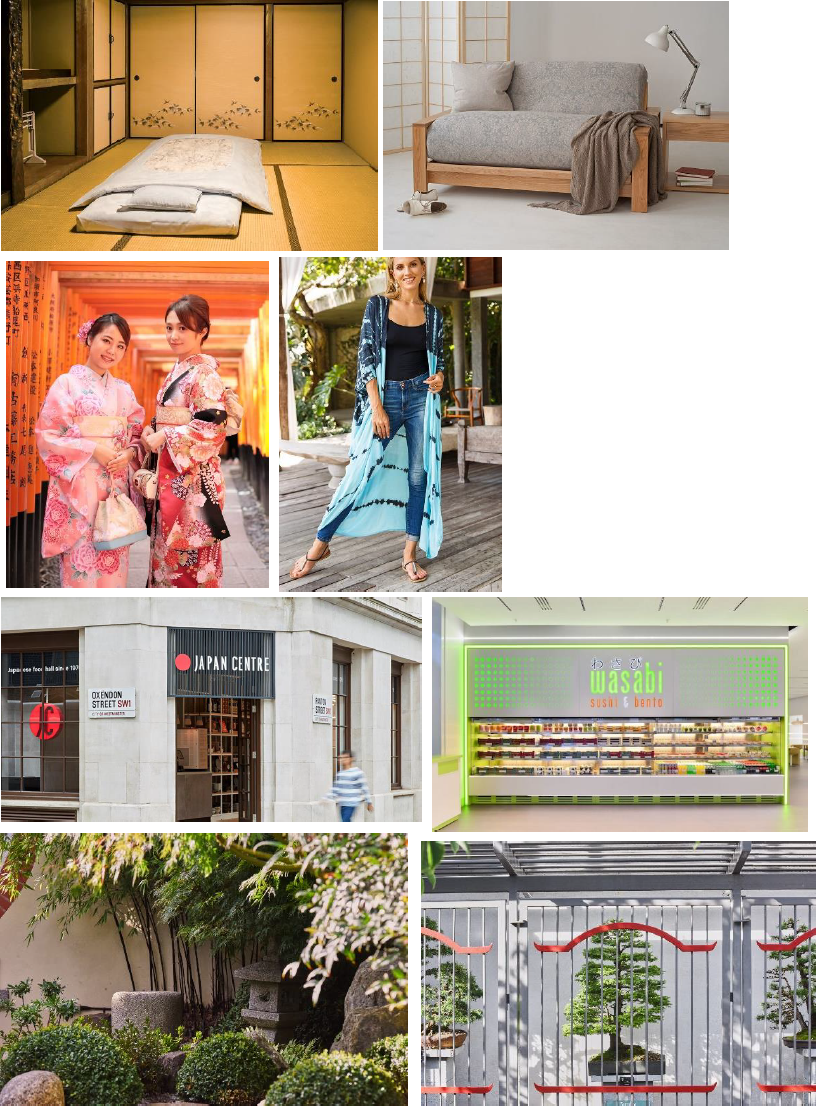
-
記事内容の出典・Sources for the content of this post
23個の元に日本語の語彙の英語辞典に追加についてのニュース記事(英語)News article about the addition of 23 Japanese words into the Oxford English Dictionary:https://www.theguardian.com/books/2024/mar/27/the-oxford-english-dictionarys-latest-update-adds-23-japanese-words
英語辞典に追加された23個の語彙のリスト(英語)A list of the 23 new Japanese words added to the dictionary:
イメージの出典・Image descriptions:
左上から右下まで・From top left to bottom right
- 伝統的な布団 Traditional Japanese futon https://voyapon.com/futon-why-japanese-sleep-floor-japan/
- 欧米スタイルの布団ソファベッド Western-style futon sofa bed https://www.naturalbedcompany.co.uk/product/panama-futon-sofa-bed/
- 伝統的な着物 Traditional Japanese kimono https://kimono-fushimiinari.jp/
- 欧米スタイルの着物 Western style kimono https://loveshushi.com/products/tie-dye-cardigan/
- 中心ロンドンにある「ジャパン・センター」という日本料理のお店 Japan Centre Japanese food shop in central London https://www.japancentre.com/ja/company/history-of-japan-centre
- イギリスの日本食レストランのチェーン店「わさび」の一つ One of the four main Japanese chain restaurants in the UK, Wasabi https://www.telegraph.co.uk/business/2019/03/11/sushi-chain-wasabi-fishes-new-funding/
- バーミンガム植物園にある日本庭園と盆栽展示 Two images from the japanese garden at the Birmingham Botanical Gardens, right-hand image shows the bonsai tree display https://www.birminghambotanicalgardens.org.uk/news/tag/japanese-garden/

